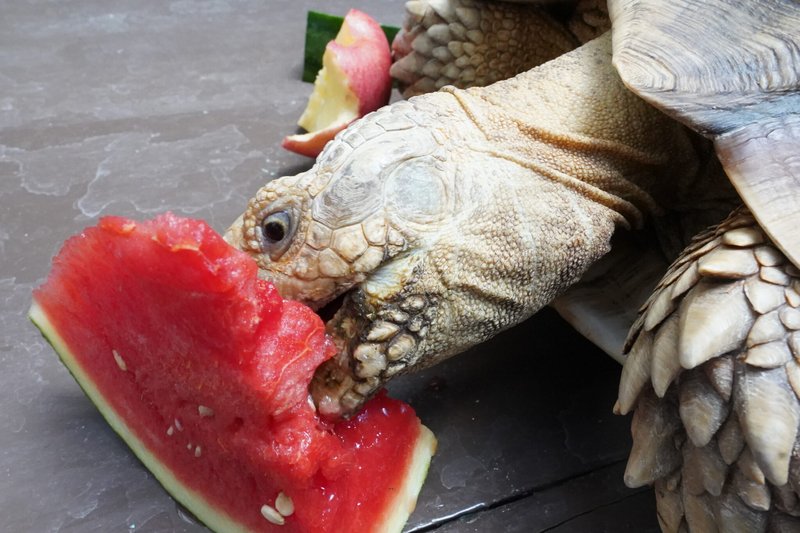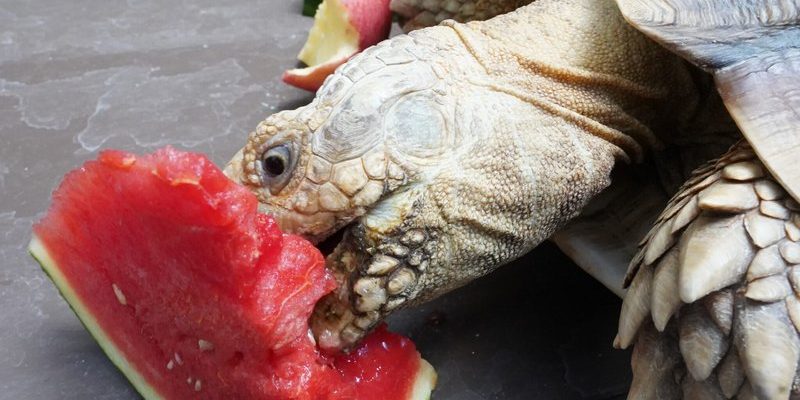
Let’s dive deep into the tortoise’s world. While they might not be the first animals that come to mind when you think of hunting, tortoises employ some clever strategies for their diet and survival. Their approach might surprise you, as these creatures are more resourceful than they seem, choosing their meals carefully and wisely. So grab a cup of coffee, and let’s explore the diet and hunting strategies of tortoises together!
Tortoise Diet: What Do They Eat?
Understanding a tortoise’s diet is crucial for grasping their behavior and habitat. Tortoises are primarily herbivores, meaning they feast on a variety of plant material. Think leafy greens, fruits, and flowers. Their meal choices often depend on their species and the environment they inhabit.
For example, the Galápagos tortoise has a diet that mainly consists of grasses, leaves, and cacti. They can munch on tough vegetation thanks to their strong jaws. On the other hand, the box tortoise tends to enjoy a mix of leafy greens, fruits, fungi, and even some insects. Isn’t it fascinating how diet variations arise based on adaptations over time?
Here’s a quick breakdown of common food sources for tortoises:
- Grasses: A staple for many species, providing fiber and necessary nutrients.
- Leaves: Variety is key! Lettuce, kale, and dandelion greens are favorites.
- Fruits: They have a sweet tooth for berries, melons, and apples.
- Vegetables: Carrots and squash can be delightful treats.
Through these different dietary choices, tortoises play a vital role in their ecosystems—helping to spread seeds and maintain plant diversity.
How Tortoises ‘Hunt’ for Food
You might be wondering how tortoises manage to “hunt” when they aren’t exactly sprinters. Well, their strategies are all about patience and precision. While they’re not hunting in the traditional sense like a lion stalking its prey, they do have a keen sense of their surroundings and know where to find the best munchies.
Tortoises often utilize their fantastic sense of smell to detect delicious plants from a distance. Imagine walking into a bakery and instantly catching the sweet scent of freshly baked bread—that’s how tortoises feel when they whiff a ripe fruit or tender leaf!
Once they locate their food, tortoises approach slowly. They don’t rush in; instead, they take the time to ensure they’re making the right choice. This careful consideration prevents them from munching on potentially harmful plants. Some tortoises will even use their strong, pointed beaks to dig through the ground to unearth hidden treats like tubers or roots.
The Role of Their Shells in Survival
Now, let’s chat about the tortoise shell—the ultimate multitasking tool! While it’s not a direct diet source, their hard shells serve multiple important functions that aid in their survival.
Primarily, the shell acts as a protective barrier. When predators come lurking, tortoises can retract their heads and limbs into their shells. This provides an excellent defense mechanism. Imagine wearing a suit of armor; that’s what their shells do for them!
The shell also helps regulate their body temperature. Tortoises are ectothermic, meaning they rely on their environment to stay warm. By soaking up sunlight on their shells, they can stay cozy and active—especially important for digestion. A well-warmed tortoise will be more inclined to roam for food!
Water: An Essential Part of Their Diet
Water sources are crucial for tortoises, particularly in arid climates. They don’t just rely on drinking water; they often get moisture from the plants they consume. This means that a lettuce leaf, for instance, is not just a meal but also a hydrating snack!
In many cases, tortoises will seek out juicy fruits, like watermelon or cucumbers, which are high in water content. You may have noticed how some tortoises may dig around near their food sources, not just for plants but also for a quick drink. It’s like a two-for-one deal!
It’s essential for tortoise owners to provide fresh drinking water regularly and ensure their diet includes water-rich foods. This hydration helps in digestion and overall health.
Seasonal Changes in Tortoise Diets
Just like we change our wardrobes with the seasons, tortoises adapt their diets too. Depending on the time of year, the availability of specific foods can vary greatly. In the spring, when plants start to bloom, tortoises might feast on fresh greens and flowers. Summer brings a bounty of fruits, while autumn may present a decline in food options.
In winter, many tortoises go into a period of dormancy, meaning they eat less or not at all. They slow down their metabolism, similar to putting their bodies in energy-saving mode. A tortoise can’t just pop into a store for a snack, so this adaptation is crucial for their survival.
Understanding these seasonal changes not only helps in caring for pet tortoises but also gives insight into the fascinating adaptability of these creatures in the wild.
Common Misconceptions About Tortoises
There are plenty of myths surrounding tortoises and their eating habits. One common misconception is that all tortoises can eat the same foods. In reality, different species have very different dietary needs. For example, some tortoises might thrive on a diet rich in fiber, while others may require a bit of protein.
Another myth is that tortoises can survive long periods without food. While they can go longer than many animals, they still need regular meals to maintain their health. Their slow metabolism doesn’t mean they don’t need nutrient-dense food—it’s the opposite!
You might also hear that tortoises are completely herbivorous and never eat meat. While it’s true that most tortoises stick to plants, some species may occasionally munch on insects or small creatures, especially in the wild. It’s always best to do thorough research specific to each species.
The world of tortoises goes far beyond their slow, steady movement. Their diet and hunting strategies showcase their unique adaptations and resilience. These magnificent reptiles have developed clever ways to find food, survive in harsh environments, and thrive in various habitats.
So, the next time you see a tortoise, remember that beneath that hard shell lies a creature with a rich, complex understanding of its world. Whether munching on greens or locating a hidden water source, tortoises truly embody the beauty of nature’s design.
As you’ve learned about their diet and hunting strategies, you may find yourself looking at these creatures with newfound appreciation. They’re not merely slow wanderers. They’re resourceful survivors, and it’s well worth taking the time to understand their lives just a little better.

